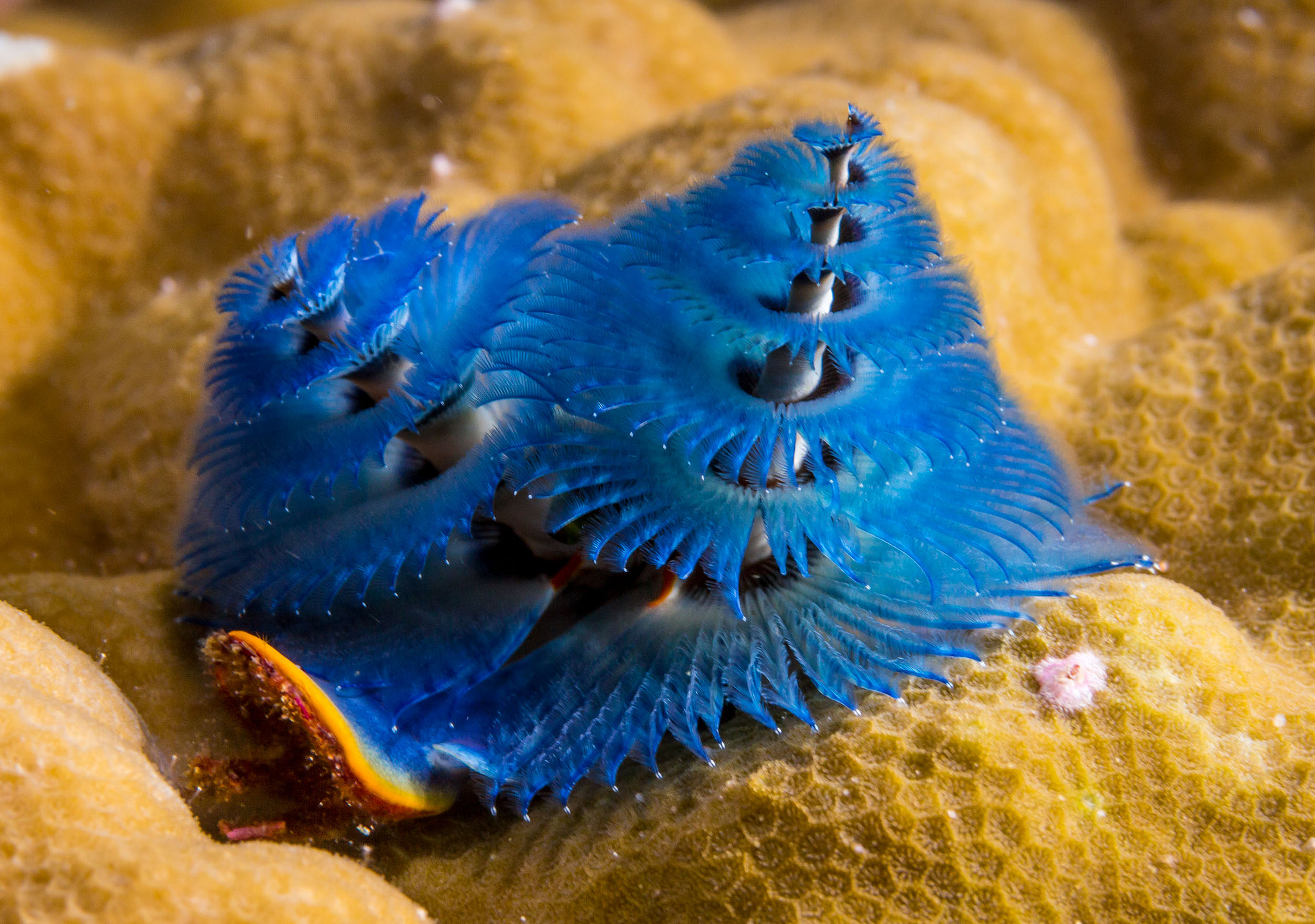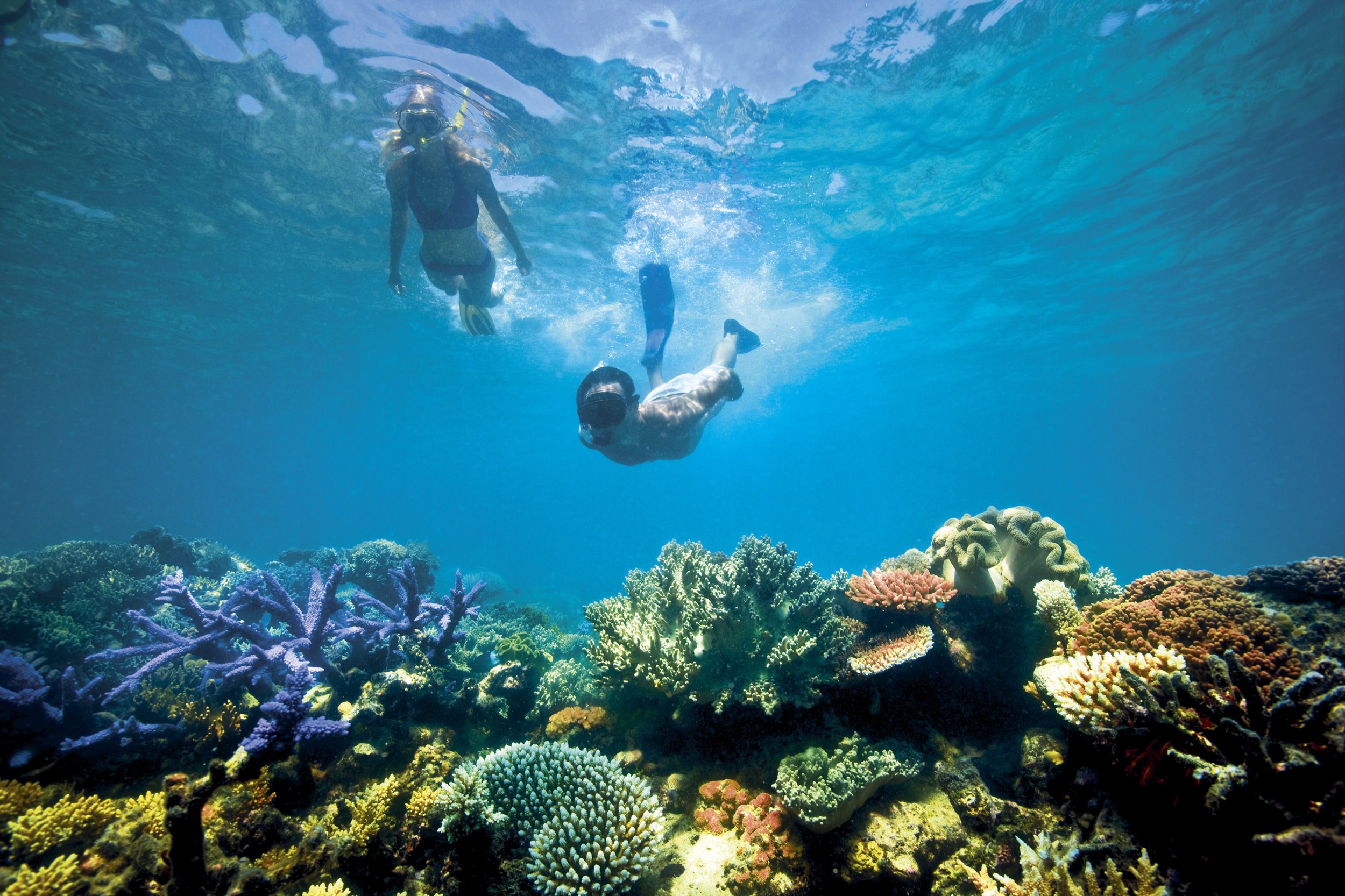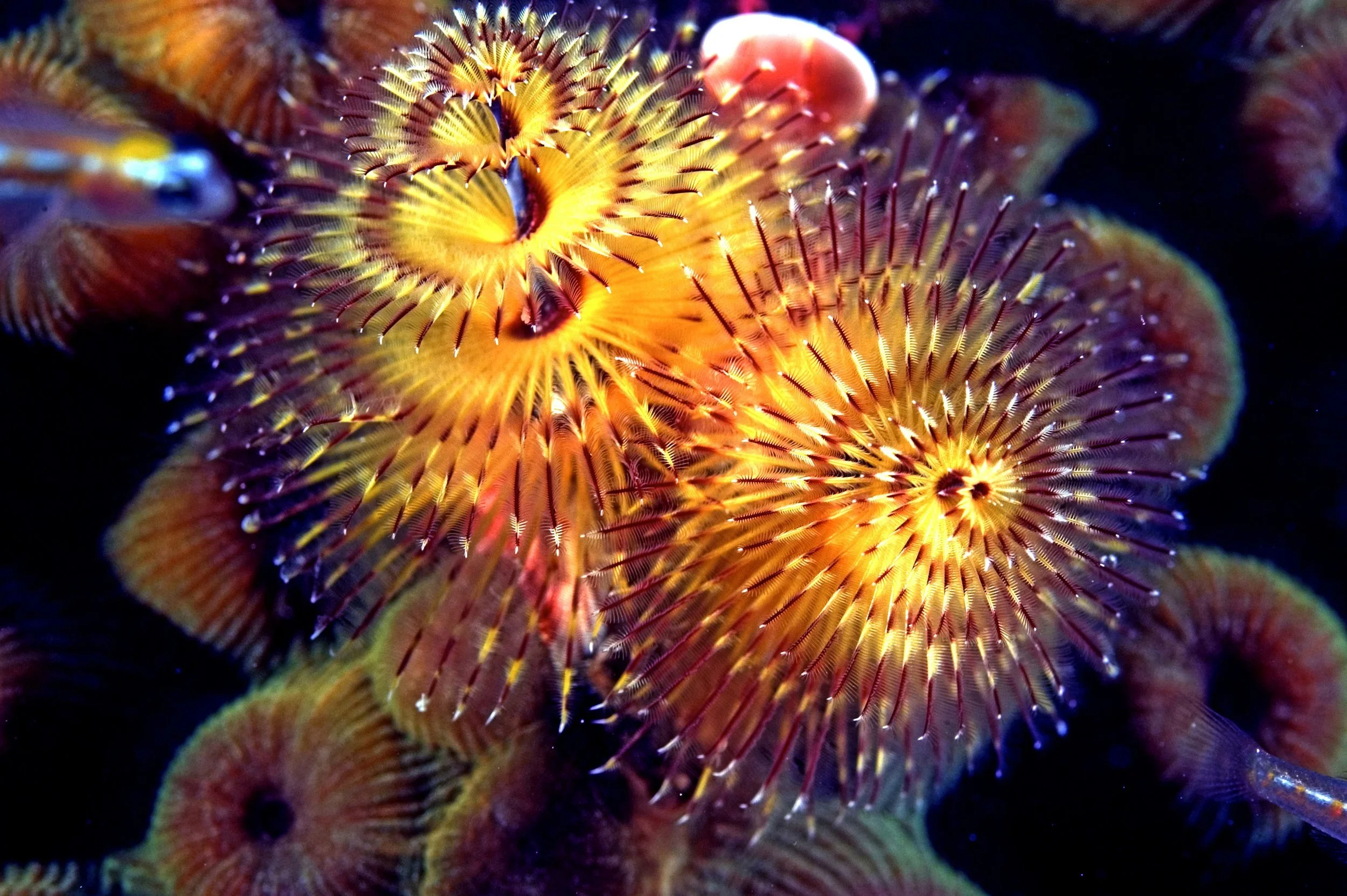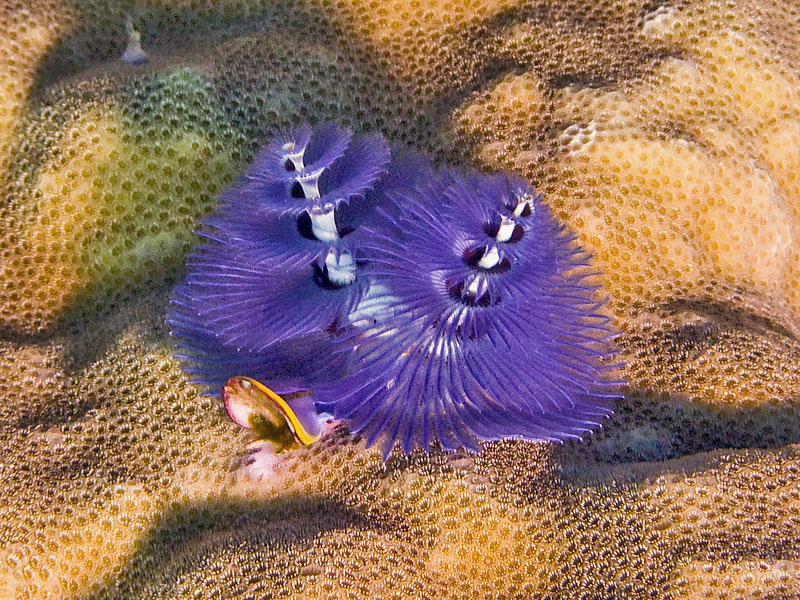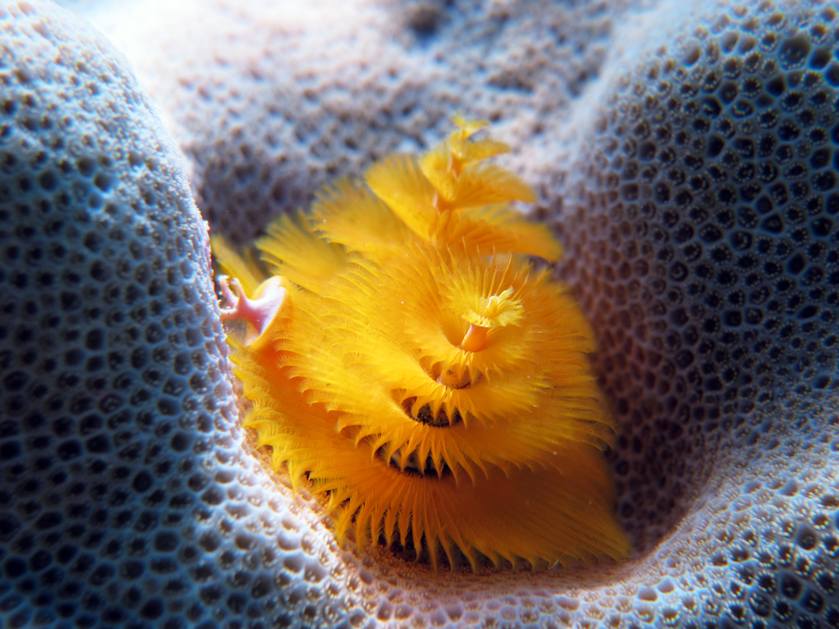
Five fast facts about Christmas Tree Worms
Christmas Tree Worms are one of my favourite things to find when snorkelling on the Great Barrier Reef, and so in the spirit of Christmas, here are some fast facts about these little guys. I bet your bottom dollar they'll be the first thing you go looking for when you snorkel straight from the back of the boat on your next luxury charter in the Whitsundays!
For those who celebrate Christmas, tree decorating comes once a year, but in the world's tropical seas, 'tis always the season! Christmas tree worms (Spirobranchus giganteus) are a type of polychaete, a group of segmented worms that contains over 13,000 species. And just like their cousins the "sea mice" and feather dusters, these unassuming invertebrates put on quite the eye-catching display.
1. Tree sieve
The Seuss-style plumes you see above – which come in an array of colour morphs – are called "crowns", and you'll notice they appear in pairs. That's because each worm has two of them. By pumping water up and over the crowns, a Christmas tree worm can filter out tiny plants and animals to snack on. The feathery structures are lined with both sticky mucus and spiky bristles (called cilia), which help trap passing prey.
2. Double duty
After a bit of size sifting, the worm moves any tasty morsels – conveyor-style – to the mouth, but the crowns do more than just catch food: they also harness oxygen! For this reason, the structures are often mistakenly called gills.
3. Now you see me
Underwater "pines" might be beautiful, but they're really just the tip of this worm's iceberg. Two-thirds of the body of a Spirobranchus lies hidden in a calcium carbonate tube, which it erects as a bunker.
Some groups take this one step further, by setting up shop in stony corals. But the crafty worms don't do the heavy drilling: by nestling their bodies against the corals' living tissues, they force the polyps to build around them. Over time, these coral-encased bunkers can reach ten inches in length.
Spirobranchus worms are pretty choosy about which corals they settle on, but scientists are still working out why. Some speculate that landing on carefully selected species could help the worms with reproduction. Others suggest the pickiness comes down to avoiding accidental predation (no worm wants a coral-munching parrot fish is hankering for its home turf).
4. Only the classics for these worms
Once settled down, a Christmas tree worm can live upwards of 30 years! (Though 10-20 is more common.)
5. Ladies and gents
While many invertebrates reproduce asexually, there are actually male and female Christmas tree worms. These animals are broadcast spawners, meaning they shoot their genetic contribution into the surrounding water, in the hope that it meets its match. Once fertilisation occurs, it takes just 24 hours for larvae to develop.
